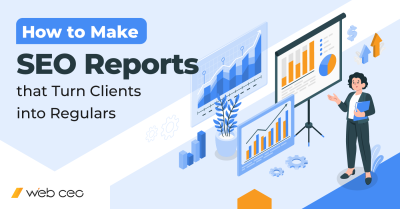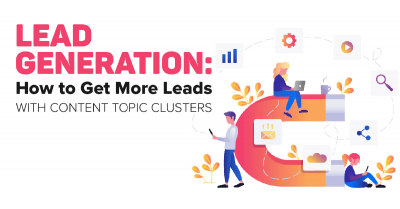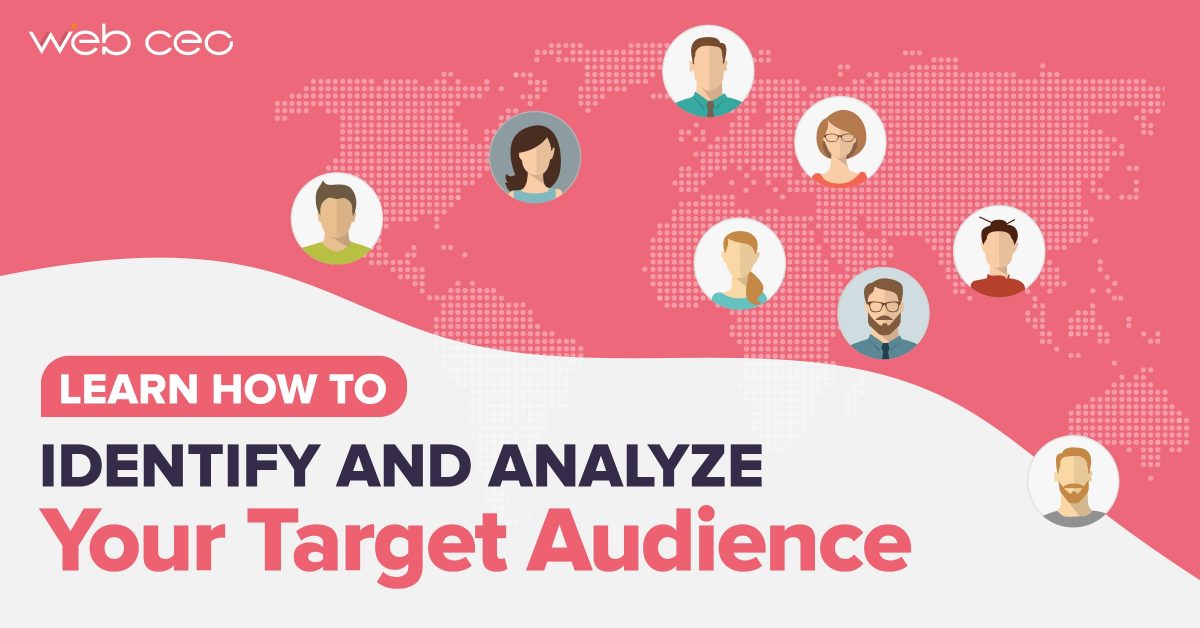
A target audience can be the result of a thousand questions. What is the target audience? What’s the difference between them and ordinary users? Does it have any influence on advertising, sales, and promotion?
You bet it does! Your product, your advertising campaigns, and your website will be very much affected by the concept of a target audience.
Today we will help you to:
- Analyze your current audience and make use of this information;
- Understand what a target audience is and identify yours;
- Apply new knowledge to promote your goods or services to the right people.
INSPECT YOUR CURRENT AUDIENCE: ASCERTAIN HOW YOUR BUSINESS OPERATES AND FOR WHICH PEOPLE
Why businesses need to know their audiences inside and out
There is a set of reasons why you must care about who your customers are:
- to see who is interested in your products at the moment. This concerns the number of people and how this number correlates with the number of purchases made. If these figures drastically differ, you will have trouble presenting your goods;
- to analyze the efficiency of your advertising campaign. For instance, if your product was created for teenagers but is bought by middle-aged people, something is amiss and specific changes have to be made;
- to see the way for the further development of your product based upon the needs of current customers. If the development of your product is built solely on your own preferences, you will never please customers who require constant adjustment to modern trends and individual approaches;
- to build a clear picture of your real target audience;
- to find the right and more efficient way to communicate with your customers via content, visual media, advertising, and so on.
Analyze your current audience and its motivation for visiting your website
There are different types of analysis you have to conduct:
1. Demographic Analysis
It includes users’ location, age, gender, ethnicity, marital status, occupation, education, cultural, financial, and social backgrounds.
This helps evaluate the price range and importance of your product depending on people’s everyday life and their need for your services. Some information is hard to get and can’t be obtained without permission because of privacy concerns. However, it doesn’t mean that you can’t get it at all. Just address your users in an adequate manner.
The easiest way is to use Google Forms, one of the most well-known platforms for conducting surveys. Create a list of questions and ask your users and visitors to answer them.
Sometimes people jump over them due to privacy concerns. We recommend you mention that none of the given answers will be disclosed to the public. Don’t ask such details as first and last name, precise location and so on. It’s better to go with general questions so that people will feel more secure.
How can this aspect help you?
This information will help you analyze reasons why people prefer your products or services, be it for study, household tasks, work, and so on.
You can rethink your marketing strategy to reach the pain points of your customers and offer valuable solutions that they will gratefully take.
Moreover, you can exclude some points from your marketing efforts if they somehow provoke uninterested people to visit your websites such as irrelevant images or texts.
Learn more about the FAB (Feature, Advantage, Benefit) method in content management.
N/B: You should understand that the geographical situation of some people can lead to dramatic changes in your marketing campaign. If you have a focus on specific locations, scrutinize conditions people live in, i.e. the level of a country’s prosperity, specific traditions and customs inherent in the culture, international or military conflicts, and so on.
2. Psychographic Analysis
People’s demographic conditions influence their psychological background, worldview and therefore opinion about your products or services.
Psychographic analysis includes research on people’s mentality and psychology: opinions, prejudices, stereotypes they believe, some specific attitudes to trends or movements, beliefs and the like.
How can this help you?
With this data you will get an opportunity to create a circle of opinions about your business and understand how specific concepts or perceptions can build absolutely different images of one product. Some ideas you would like to use to design or promote your business can play negatively.
A psychological facet can lead to misinterpretation of the message you have put into, that’s why you have to “enter” your potential customers’ minds and pave the way to successful cooperation. Sometimes such an analysis can lead to several marketing campaigns for people in different locations or of different beliefs.
3. Behavioral Analysis
This is of the most important types of analysis in terms of understanding how people see your website. It includes insights on customer ways of learning information, their behavior on the website and paths they take to learn more about your business.
How can this help you?
Behavioral research gives valuable data on points where customers stop their journeys, lightening problematic aspects you have to pay attention to, and approximate reasons on why some people buy your products while others leave your site without purchasing although they were attracted earlier.
Having such knowledge, you can reconsider the logic of your website, i.e. shorten or extend the way to purchases, rewrite content, overhaul pricing plans and so on.
The best tool to gather these three types of data is Google Analytics. A bunch of reports regarding people visiting your website will show you who comes to your website, where these people are from, what language they speak, how much time they spend on your website.
Open the Audience report, and check the categories outlined there, specifically: Demographics, Interests, Geo, Behavior, Technology, Mobile.
The three reports – Demographics, Interests, Geo – will show information about people’s demographics and psychographic aspects.
This sort of data can also be found in the WebCEO Google Analytics Module:
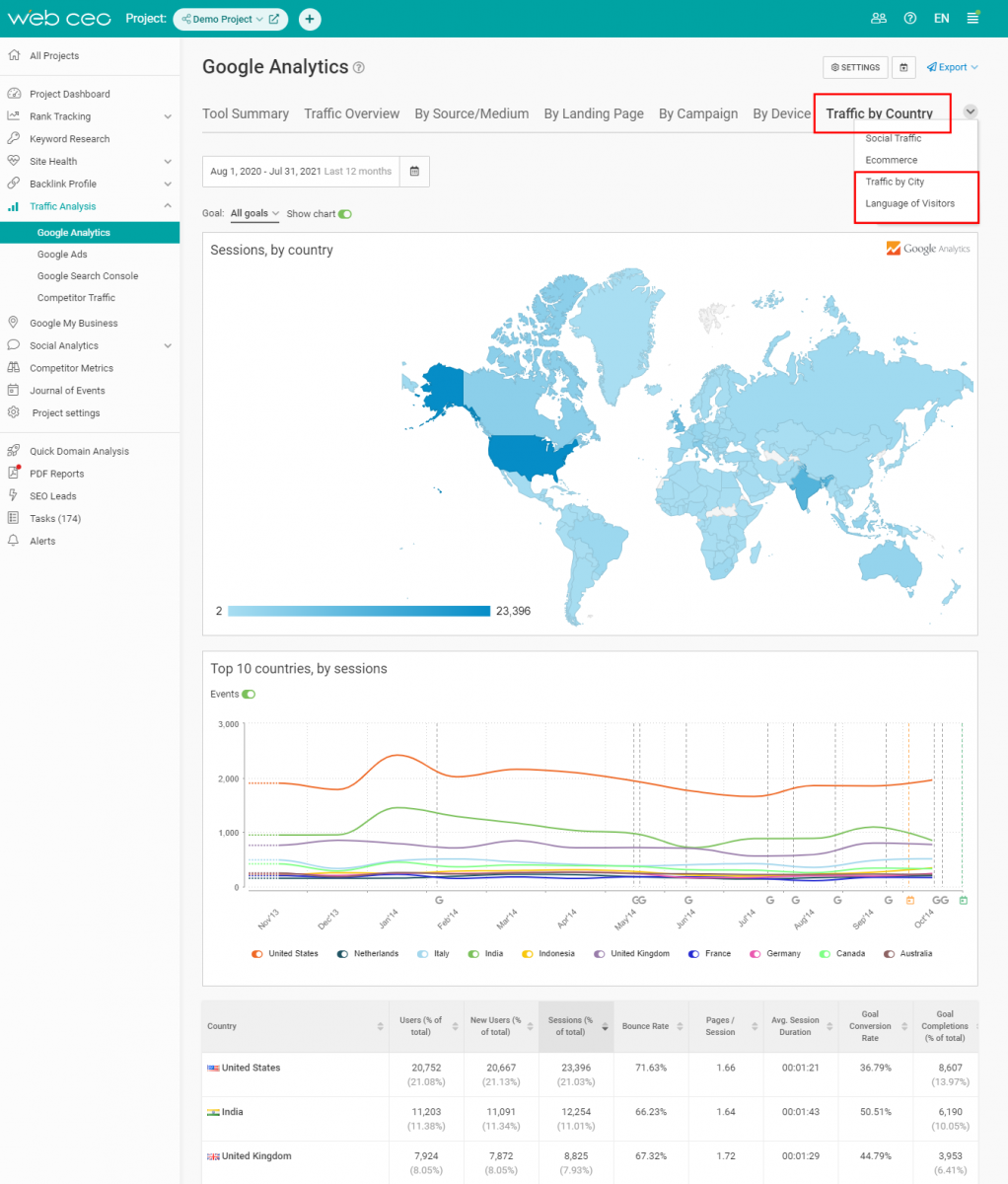
The Behavior report is an important step in identifying how people travel across your website. It will show you where people come to your website from (organic search, advertising, etc.), what pages they landed on at first, and to which pages they proceeded. Note the number of users that dropped out at each stage of the interaction.
The technology report will show information on the browsers (down to screen resolutions and colors) and the operating systems visitors used.
The mobile report will present information about the devices people used while navigating your website: desktops, mobiles or tablets.
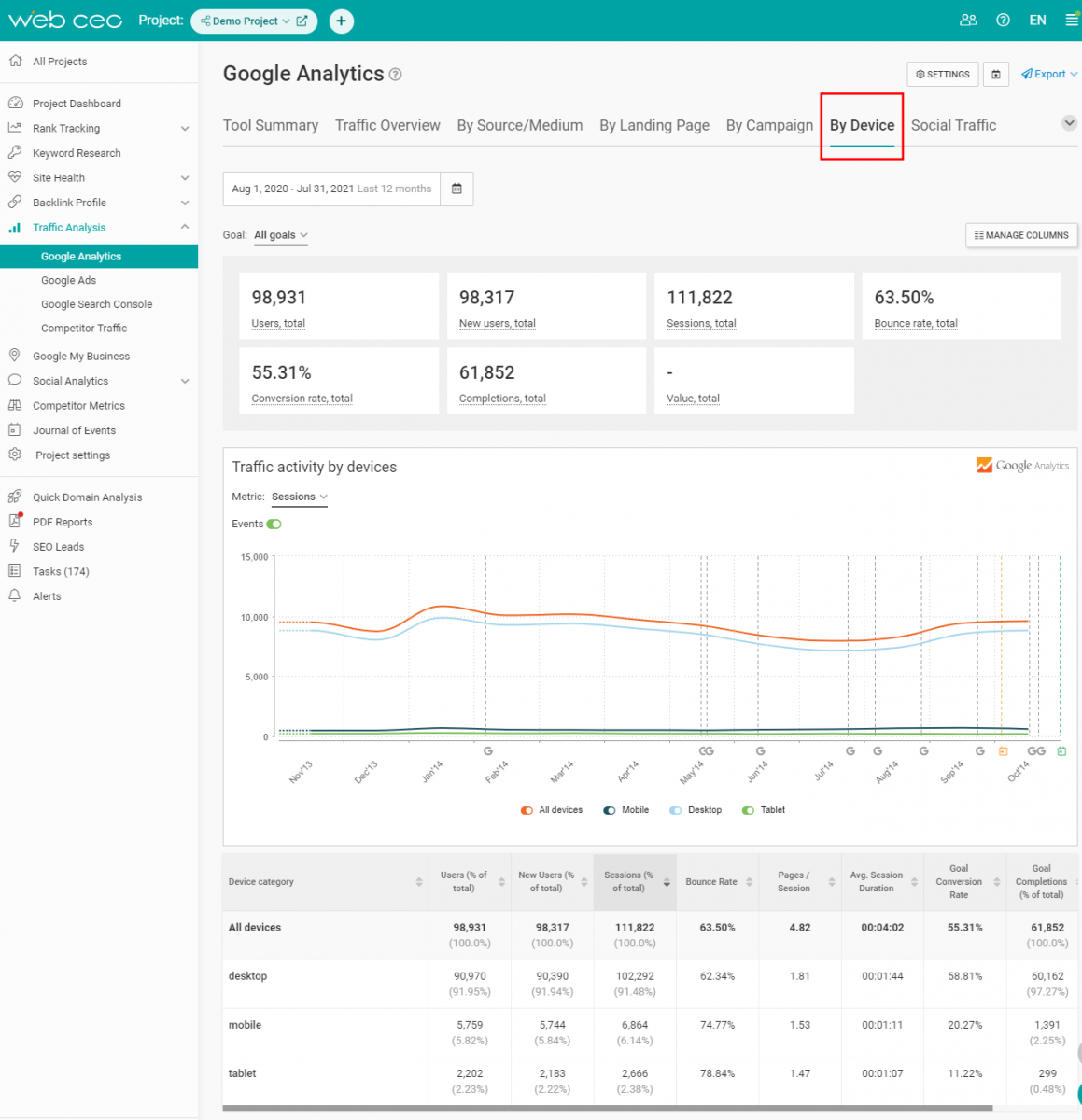
If you work with social media, there are the WebCEO Facebook Insights and Social Engagement Tools that will help you work with opinions that people tend to leave on social media platforms. You can analyze the general impression about your product and improve points that were mentioned (if the feedback is negative).
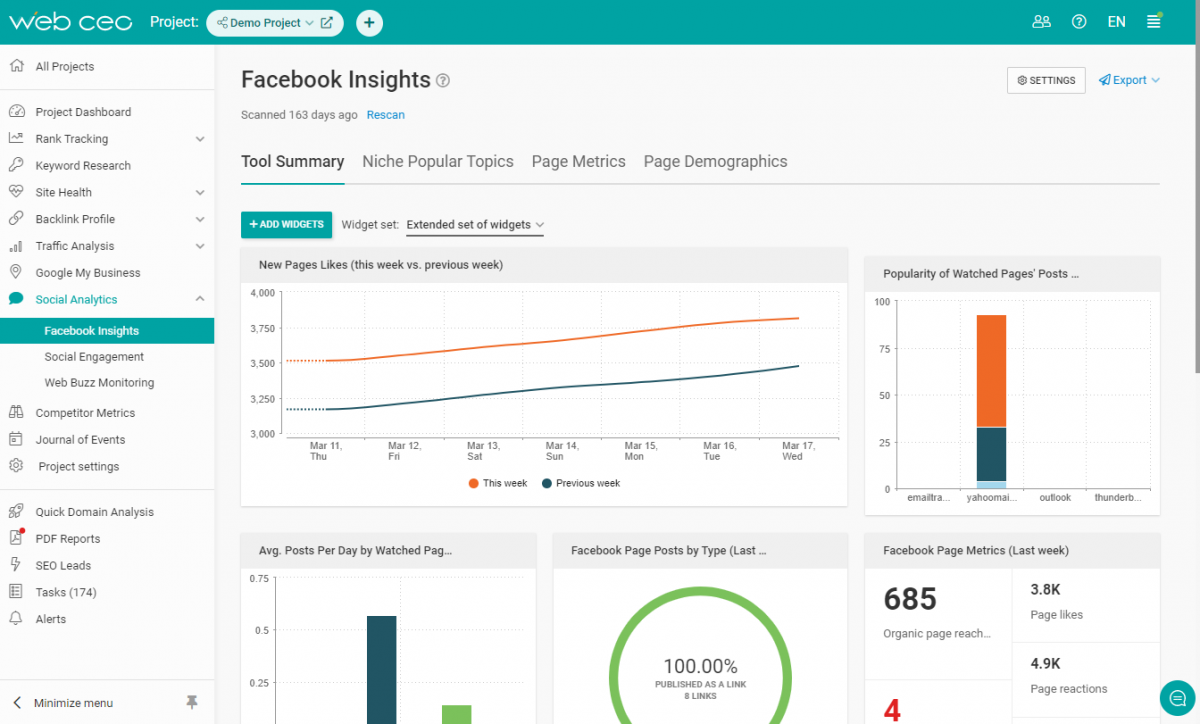
Also, pay attention to the WebCEO Buzz Monitoring Tool to see what people say about your brand on Twitter, blogs and news sections.
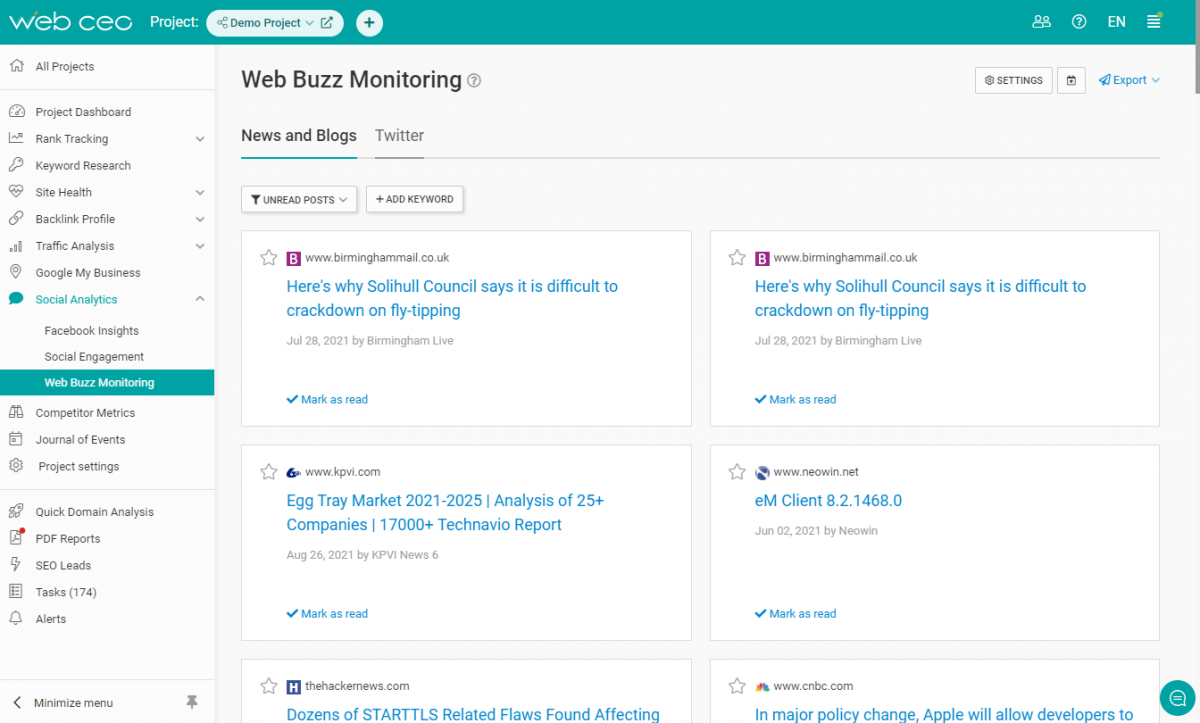
4. Competitor Audience Analysis
Your competitors are not only companies you would like to outperform, but are also a source of knowledge you have to get and use.
Analyze the audience of your competitors on the points we described earlier. You will not only extend your view of your ideal audience but also analyze what aspects your competitors attract people with. These aspects you can apply to your business and win some customers from them.
Besides the type of customers they have, you will learn more about a company’s development program, some features you haven’t thought about and so on. We are professionals but we are usually inside the bubble of our businesses. Competitors will help you burst the bubble and conquer new horizons.
5. Industry Analysis
Industry analysis means trends, movements and actions inside the niche you operate in and how people react to them. Not every trend gets a warm welcome; not everybody is on board with new trends or movements. If you put such new stuff into practice thoughtlessly, you can lose some of your current or potential clients.
Identify channels that drive people to your website
You must find out where your customers have come from.
#1: Make a list of all the channels that have brought people to your website
The User Acquisition report in Google Analytics will show you a list of channels people have come to your website from. For instance, it can be organic results, paid advertising, social media, email campaigns, referral sources and so on.
This report may show you active sources of traffic that you haven’t thought about but they turned out to be lucrative. Hence, you can use them in your future marketing campaigns.
#2: Shortlist hot channels
An important aspect to consider is the efficiency of channels you have consciously put a lot of effort into.
If the figures leave a lot to be desired, that’s a strong signal to rethink your strategy towards this very channel or find a more profitable alternative.
If there are new platforms on the list which you haven’t heard about or worked with – examine them meticulously. Especially if these platforms bring real customers instead of casual visitors.
Next time you’d better include them in your marketing strategy. If they can provide you with the desirable results, this is a strong reason to work with them further and even design a sub-strategy to work specifically with these platforms.
#3: Double check less efficient sources
It’s obvious that you have to use any possibility to bring customers to your website. However, going on the stage underprepared is a bad decision. If there are sources that bring poor results, first shift your focus to other, more successful platforms, work with them and then research others.
Analyze how other brands perform on platforms where you somehow failed, learn what methods and strategies they use, what type of audience dwells there, what they are interested in the most and rebuild your plan of action to succeed even on the extra-hard stages.
Inspect people’s behavior on the pages of your website
Besides other places, you must review people’s behavior on your website as well:
- What are the most interesting or preferable pages and blocks of information for them?
- How long is their path?
- Where do people stop their journey and what is their farthest point they tend to reach on your website?
- What percent of people come to a purchase and what percent drop out before that?
- What pages or blocks remain unattended?
- What interrupts the customer’s journey?
And a lot of other aspects.
This type of data helps you understand whether your website is well-structured and smooth enough to lead a visitor right to a purchase.
We would highly recommend you try heat maps such as Crazy Egg or Hotjar.
These tools show specifics of people’s behavior via hot spots that indicate places of strong interest. They also show the amount of people who spent time on your website and the length of their visits.
After heat map analysis you can reorganize the content tree of your website, for instance, place the most important or triggering information that can encourage a person to buy something on the hottest spots.
This analysis also helps evaluate the level of engagement. If spots are getting colder and colder scroll by scroll then it’s an alarm to do something with your content or the style of its delivery.
BUILD AN ALL-PERSPECTIVE PICTURE OF YOUR TARGET AUDIENCE
Here we’ve come to the most tricky part of our article.
The target audience doesn’t always correlate with your current audience. You may have previously targeted people whom you had mistakenly identified as your prime customers. This would lead to a low conversion rate and ROI.
The target audience is basically people who really are interested in your products or services and would most likely buy them instead of just learning about them or complaining about the prices.
Your current audience can have some common features with your target audience. However, it’s not always a hundred percent match. The wrong audience specification will lead to mistakes in content marketing and promotion, i.e. texts that can annoy your potential customers and at the same time attract people who will never try your goods; or emotional messages and concepts that will resonate with the wrong audience.
Mindmap your product according to its scopes
Before creating a portrait of your target audience, you will have to identify the benefits and the scopes of application of your product.
First, create a mind map of the product from your and your team’s point of view. Write down all the spheres and tasks where your product may come in handy. Then find relationships between spheres, tasks and people. The first draft of your target audience will be ready.
Second, you can’t do everything alone, so create a focus group of absolutely different people by their demographic, psychographic and behavioral characteristics and ask them about all the ways they would use your goods. Don’t forget to ask about their attitude and ideas regarding the image of your brand.
All of them will differ or complement each other. These details will become a huge help in the course of preparation.
Beyond that, people’s honest and straightforward opinion before the very start of your promotion campaign will give you some time to remodel it in case your expectations were wrong. By adjusting to people’s needs you will get a greater chance to spark interest and nudge an audience towards purchase.
You will definitely find more ways to use your products or develop them in the future. Consequently, you will extend or limit the circle of engaged people and build a more efficient marketing campaign oriented on your real customers.
Thus we want to introduce to you to Google Trends. It can become your additional sources of information about local markets.
Google Trends manages trends and shows the level of interest in specific categories, locations (down to city and metro), periods of time, and search queries.
This data is presented not only regarding organic results in web searches, but also images, news, YouTube, and Google Shopping.
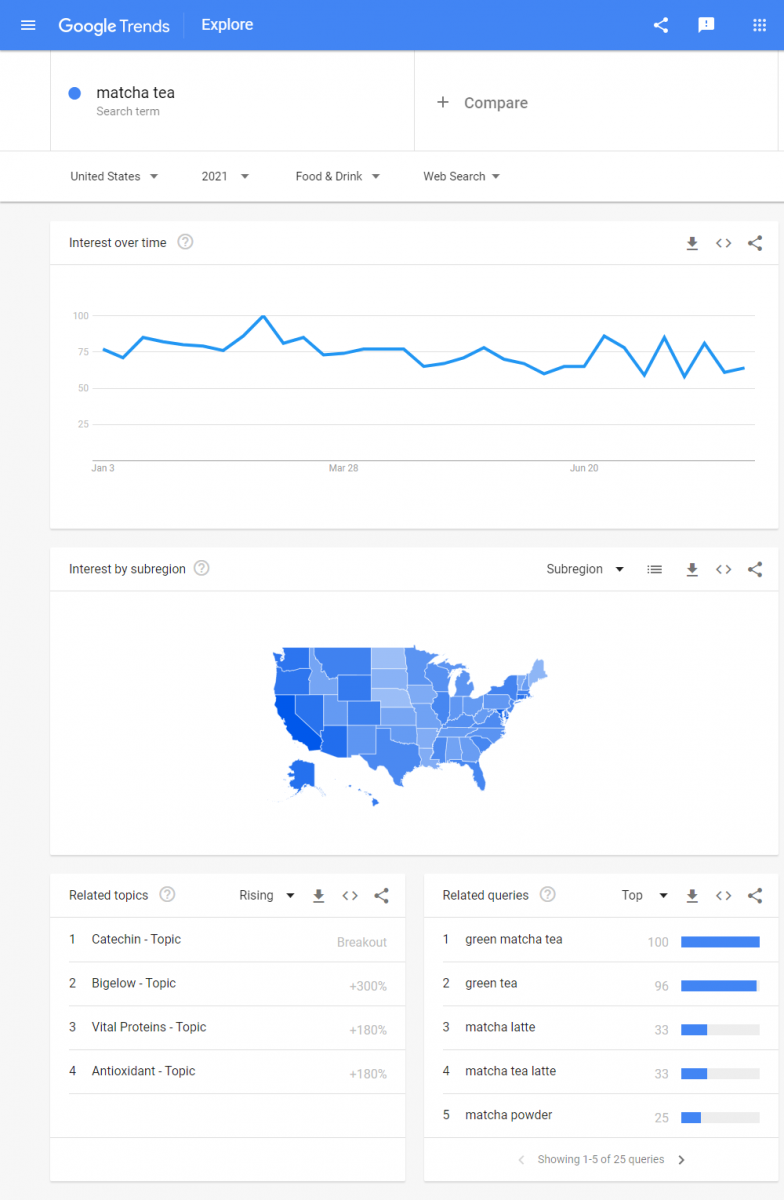
You can even conduct a contrast analysis of different products that are your opponents on the market.
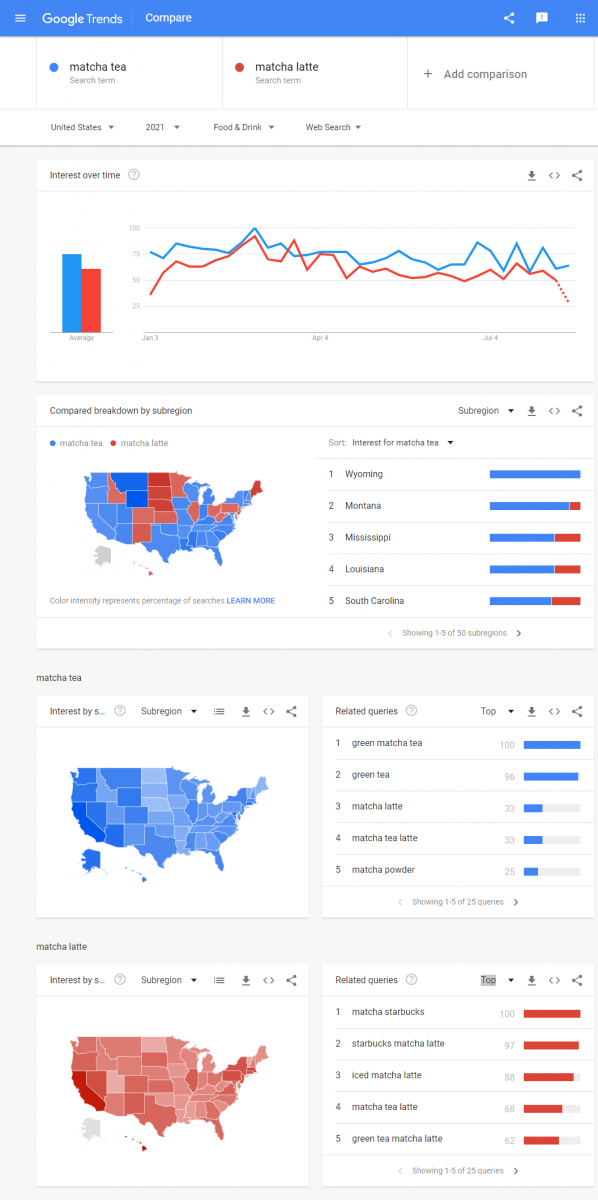
This tool will help you with market analysis. Google Trends shows top and rising search queries at specific periods of time. Your specialists can use this data to revise content or create it from scratch.
If you operate in different locations all over the country or world, this type of research is crucial because you will see where you will win and where you can expect losses.
Design a buyer persona
A buyer (or marketing) persona is a presentation of your perfect customer. This is a deeper analysis of the average person (or a couple/family) who would like to use or buy your products.
The buyer persona includes every bit of the information we discussed in the first part, but also may contain descriptions of typical situations when your goods can be used by a person and even some details about his, her or their routine, motivations and so on. In some situations, it can even be a small description about somebody’s life!
It’s like creating a person or a CV from scratch:

Source: Amy Wright
Buyer personas are also limited in terms of variety and reliability because there is no guarantee that a picture you created will be interested in your business.
We can’t take everything into account, because a) the concept of the buyer persona is to create a general picture, and b) people are so different that it’s just impossible to put everything in one portrait because some points would cause a conflict.
Rand Fishkin has written a great article explaining why marketing personas don’t deserve your one hundred percent trust.
Live sources of information and opinions are more worth it. However, it doesn’t mean that the buyer persona will not help at all. Due to it you will investigate your potential clients more deeply and get more ideas for your marketing strategy.
Rethink your strategy
Now, when you have fresh knowledge regarding your product and audience, it’s high time to implement some changes in your marketing strategy or change it from top to bottom.
Here are some points to consider so far:
- Who is really interested in your products/services?
- How can you help these people with your products/services?
- Where can they apply your products/services?
- Where do they live? Do they have alternative products/services they already use?
- Does your concept or image comply with the external circumstances people live in?
- Do your products/services comply with the age and interests of your customers?
- What problems can you solve with your products/services?
If you have noticed some disparities between your previous view of the target audience and the newly developing one, it’s time to start working and moving forward.
APPLY YOUR KNOWLEDGE TO CREATE A MORE IDEAL USER EXPERIENCE ON YOUR WEBSITE
Your conclusions regarding the target audience should be seen clearly on your website. It’s the place where people come to find more information about products/services that interest them. If it doesn’t look relevant, attractive, easy to navigate or doesn’t answer the most obvious questions about your brand, you will quickly lose visitors that may become your customers.
What should you consider?
Show an appealing style of delivery based upon the needs of your target audience
Your website should reflect your product style at each detail:
- Write texts in the style that appeals to the age and gender of your target audience, for instance, use a less formal style when you aim for teenagers and young adults, and let yourself have a more literary or business approach in speech when you address a middle-aged group of people who will assess your brand even by the tone of your voice. Don’t exaggerate! Your texts should still remain straightforward and easy to understand;
- Choose the color palette and visual design that will be pleasant to the people of a different range: you have to keep your customers calm or excited but not exhausted because of a large amount of bright colors that can hurt their eyes;
- Make everything clear: sometimes people don’t need to read thousands of words to try or buy something because advertisements or first blocks of the text may have warmed them up enough to make a decision to purchase already. Create special buttons inside the text or at the most noticeable spots to help people purchase or get a trial/sample/demo call faster;
- Make their journey absorbing: diversify your content by implementing video or audio fragments, and maybe even some animation or GIFs; this can make people’s experience on your website more interactive and enjoyable;
- Follow SEO trends: even if your target audience consists of people who don’t really care about appearance and performance, you will still have to work on your website to implement the newest decisions for the technical and SEO sides of your website.
Work on the customer website journey
To create a convenient path from the familiarization stage to the purchase itself, you will probably want to draw a straight line for a user to reach the prime goal without shying away.
He or she should enter your website, find a catchy element and follow the path that this element opens, i.e. a customer has to get acquainted with the general outlook of your product in the shortest time possible with the points you make driving customer interest higher and higher.
Everything is up to you. Create a chain of convincing arguments from the very first step on the website.
First, use the data you received from tools like Crazy Egg, Hotjar and Google Analytics to get rid of unnecessary blocks on the pages of your website that bore people and obfuscate their way to a purchase.
Second, design an approximate line of jumps that a user from one of your target segments should make to learn everything about a product and be ready to go to the final step. Then create a trial path: use links, animation, hints and other interesting details to get a customer to the right place. Check it out on a member of your focus group. Ask what information they would like to explore and in what order.
Work out several patterns for each segment of your target audience.
Third, taking into account the previous point, restructure or create your content with the thought that a customer has to buy something in the shortest time possible. This will impact everything: the style of writing, the length of text blocks, blocks with visual media and even the style of links. Apply knowledge about your target audience’s backgrounds to write texts that will resonate with them.
You can also allow site visitors to ask questions in real-time through chats, and, depending on the answers, develop new paths for people who think like they do.
Get data, analyze it, and implement necessary changes
The work isn’t over even after the start of your marketing campaign.
Now, when everything is published, it’s high time to gather new data and check if your expectations are met.
Give users some time to conduct actions, purchases, go through all of your pathways and then embark on the new stage of analysis. Compare data from before the changes to your fresh figures. See where you might have made mistakes or chosen the wrong turns.
It’s okay to miss some things, you can always apply them next time.
When your comparison analysis is ready, design a new plan of action considering the fresh data. Who knows, maybe your target audience will become wider with each new effort. It’s better to conduct research and analysis of your target audience more often because our world changes so fast and our needs change day by day.
Don’t forget to track your website’s position in different types of search: general and vertical search results, ads and so on. The WebCEO Rank Tracking Tool will help you understand if the keywords you have chosen to optimize your content for comply with the user’s search intent. It will show you fluctuations in your rankings over time and for what keywords you have gained featured snippets.
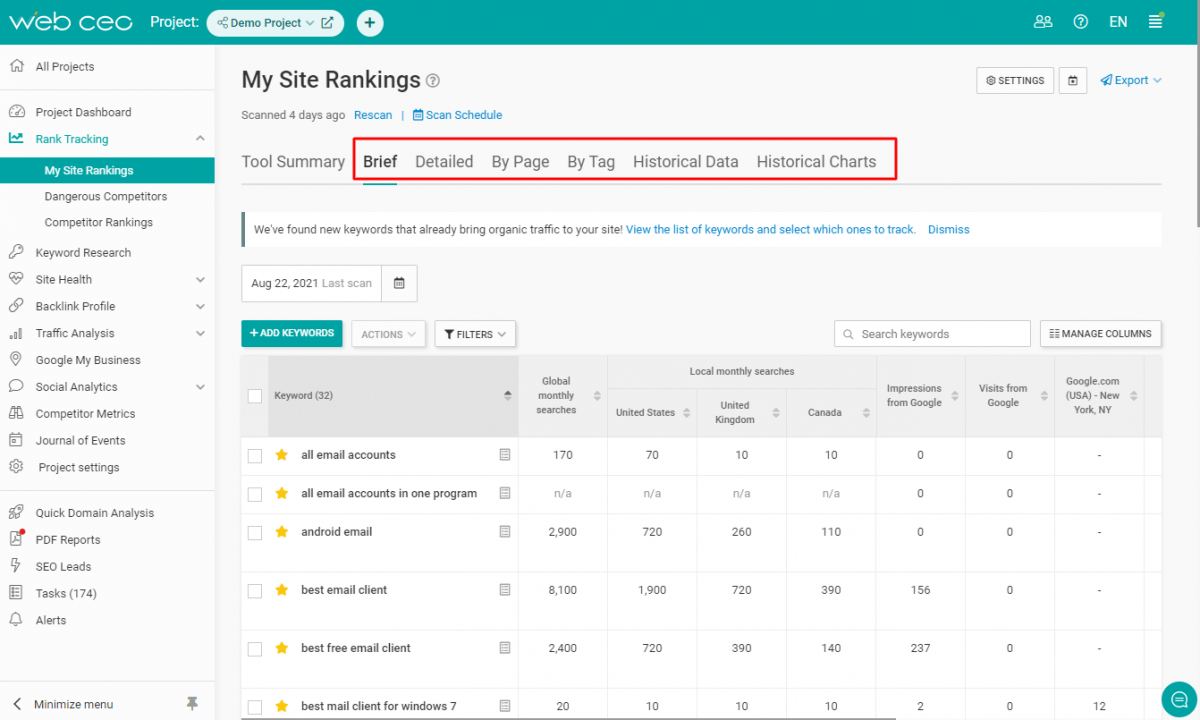
The WebCEO Google Search Console Module will show you what keywords people have come to your website by. This data will come in handy when you decide to work on your content and optimize it for the right people and with the right keywords.
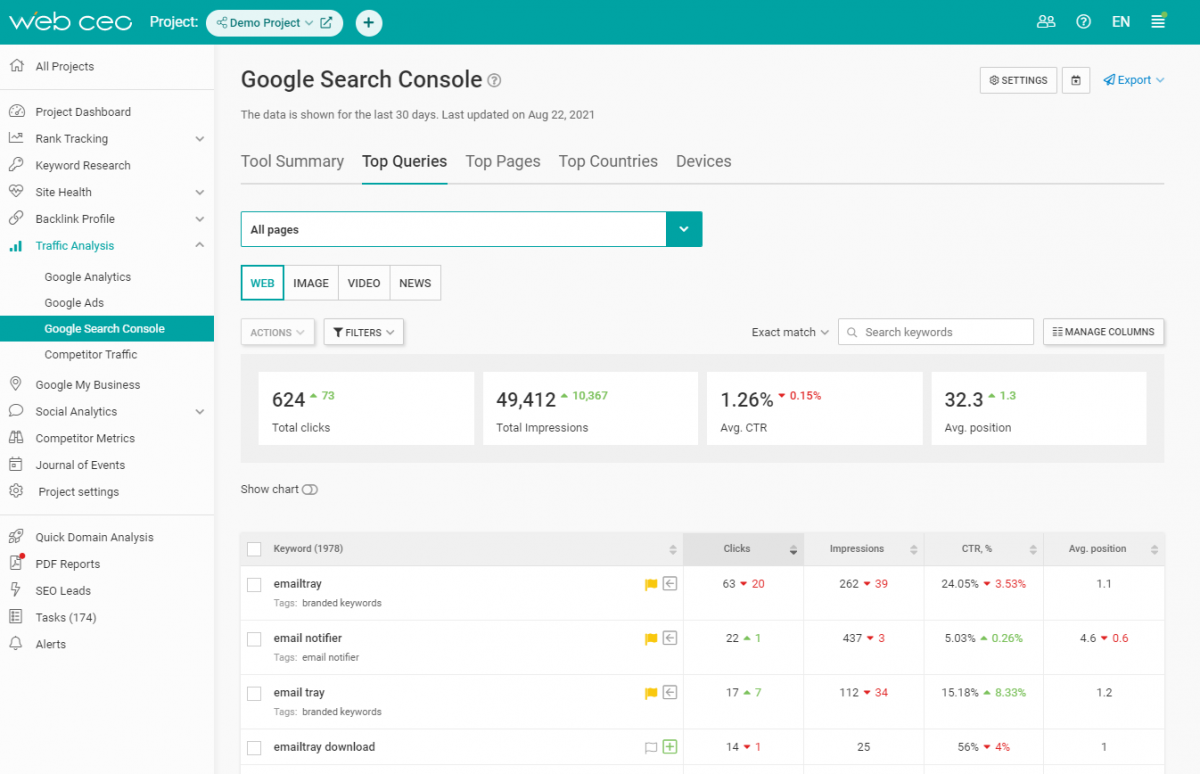
If your niche is defined as a local business, check out the WebCEO Google Business Profile Module that integrates the data from Google’s original platform. You can track your success over time there.
To provide an even smoother workflow, we have designed an opportunity to get and answer the reviews that people have left about your business right from the platform. So there will be no need to enter your original Google Business Profile account.
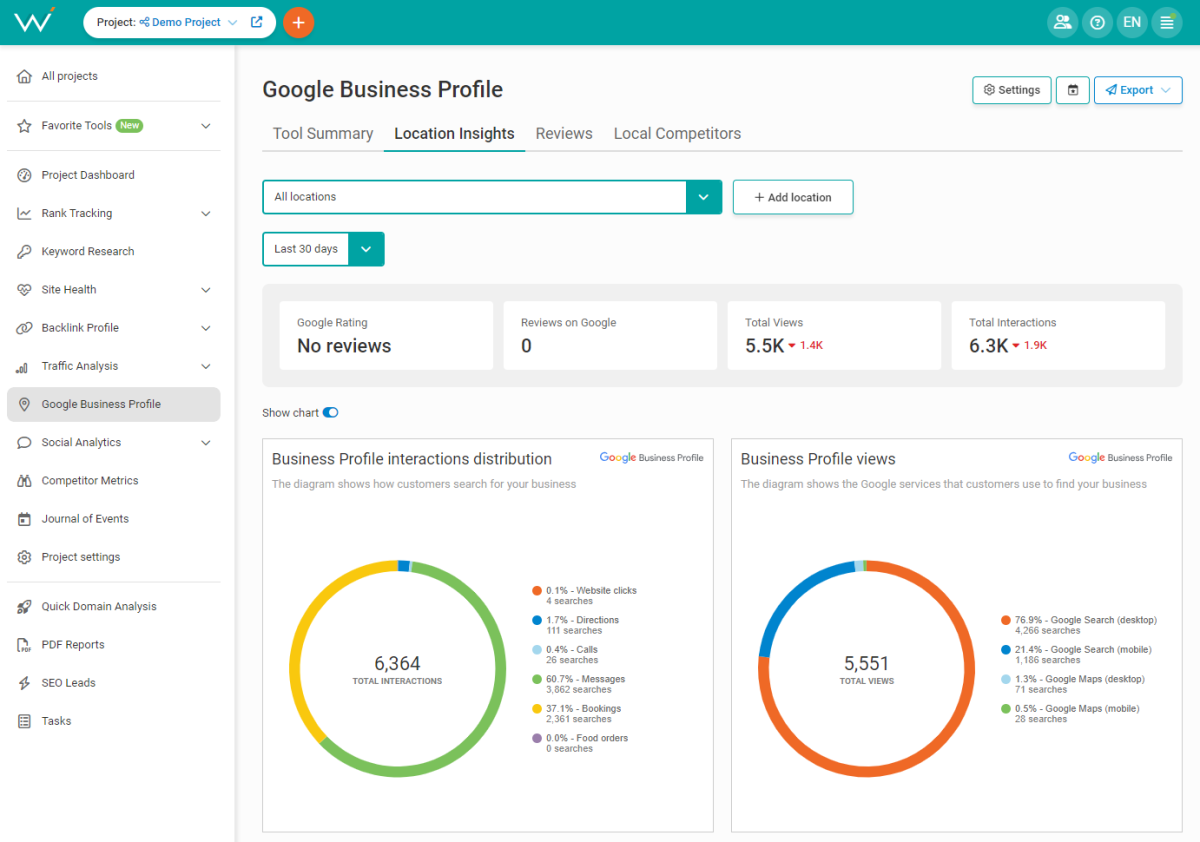
WRAPPING UP
The target audience is one of the most important aspects to consider for any business. Thankfully, we have a lot of useful information and tools to analyze this. Identifying your target audience is not that hard, but it’s time consuming.
Start your work with the WebCEO Google Analytics Module to go deeper into the research of your current audience and then design a marketing strategy that will lead your business to success.
